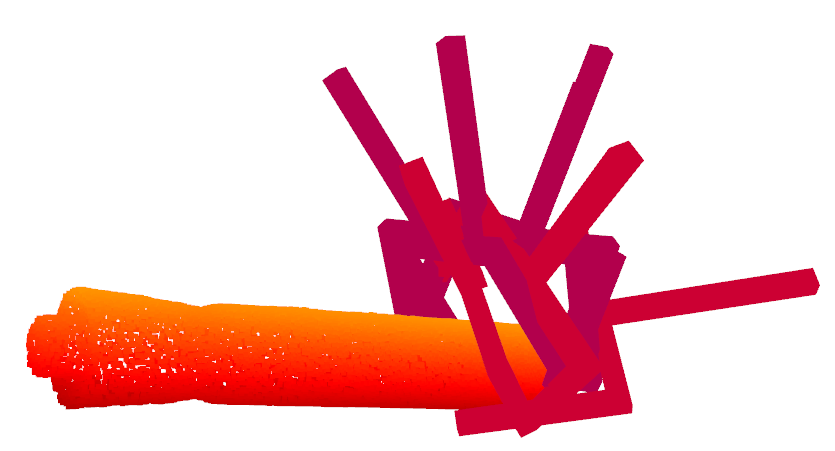Object grasp label dense annotation based on graspnetAPI. Use the same annotation format as GraspNet1-billion dataset.
- graspnetAPI
Get the code.
git clone https://github.com/rhett-chen/grasp-auto-annotation.git
cd grasp-auto-annotationInstall packages via Pip.
pip install -r requirements.txtCompile sdf generator(if you need to generate object sdf file)
cd sdf-gen
mkdir build && cd build && cmake ..
makeOrganize your data as GraspNet1-billion format. Take OCRTOC dataset as example:
| -- ocrtoc
| -- models
| -- objectname1
| -- textured.obj
| -- textured.ply
| -- textured.sdf
| -- objectname2
| -- ... ...
| -- grasp_labels(to be generated)
| -- objectname1_labels.npz
| -- scenes
If object model doesn't contain .sdf file, generate .sdf from .obj use generate_sdf() or batch_generate_sdf() function in auto_annotaton/annotation_utils.py
Set relevant arguments in auto_annotaton/options.py. The default parameters here are the recommended parameters.
Generate object-level grasp pose label.
cd auto_annotation
python main.pyLoad, save and visualize object grasp poses, you also need to set relevant arguments in options.py. The format of loaded grasp poses is same as GraspNetAPI(num_grasp*17).
cd auto_annotation
python load_grasp.pyGenerate pickle object dexnet model for fast loading.
cd auto_annotation
python gen_pickle_dexmodel.pyWe show the grasp label annotation results of large_marker object in OCRTOC dataset. When annotating this object, we set num_views=100, num_angles=3, num_depth=3, and we randomly select only one grasp point for annotaion in the example. 
The process of grasping pose annotation is based on GraspNet1-billion , many function implementations are based on GraspNetAPI.